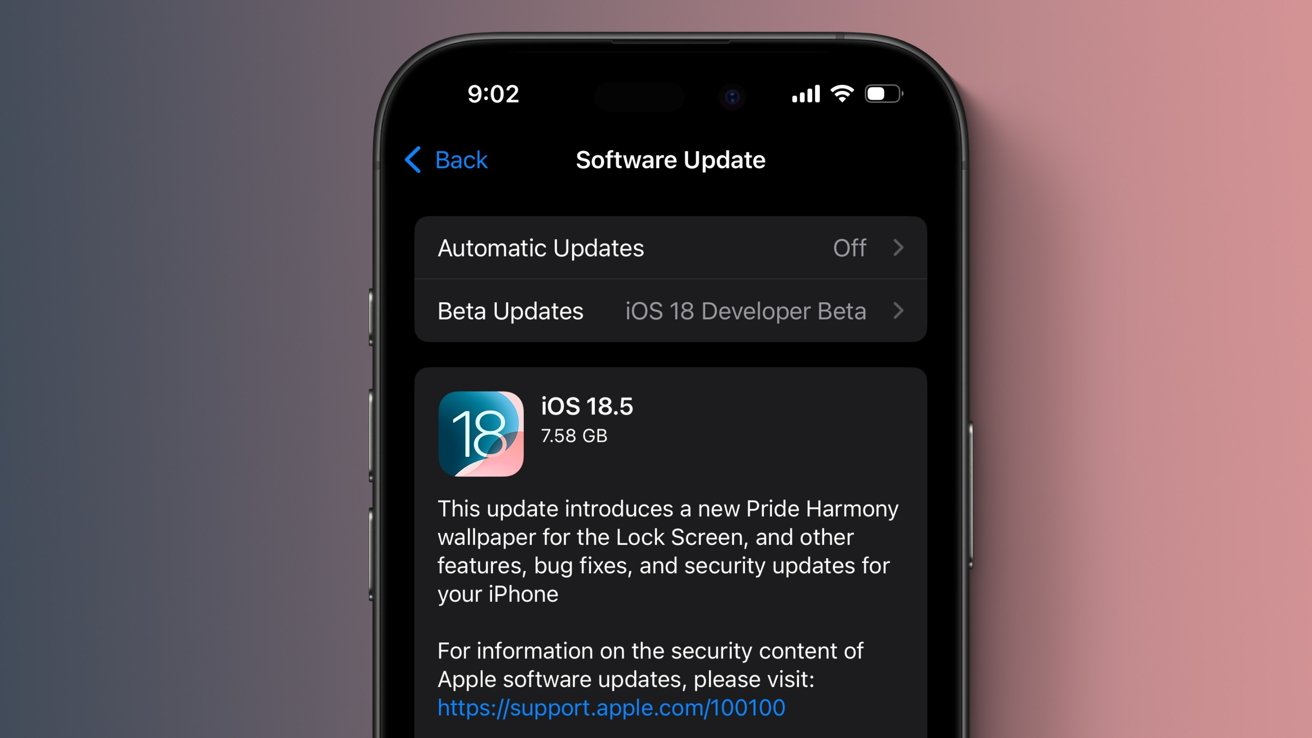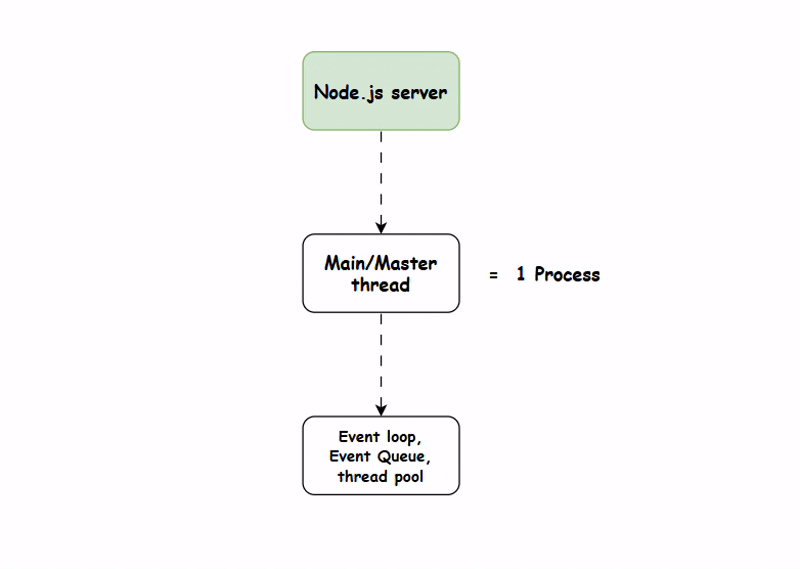Understanding Node.js Architecture: Deep Dive into Event Loop, Threads, and Concurrency
Node.js is a popular tool for building fast and scalable server-side applications using JavaScript. But what makes it so powerful? Behind the scenes, Node.js uses a smart architecture that lets it handle many tasks at the same time — without blocking or waiting. In this blog, we’ll break down how Node.js works, including: Working of Node.js and architecture Processes and threads Synchronous vs. asynchronous behavior Worker threads Single threaded and multithreading How Node.js is different from browser JavaScript We’ll also look at code examples and diagrams to help you understand these concepts clearly. What is Node.js? Node.js is a runtime environment that allows you to run JavaScript on the server. It is built on: Google’s V8 JavaScript engine: Compiles JavaScript into machine code Libuv library: Provides the event loop, asynchronous I/O, and thread pool Node.js core APIs: File system, networking, streams, and more Node.js uses a single-threaded event-driven model to handle multiple concurrent clients efficiently without spawning new threads for each connection. Node.js Architecture and Working Lets understand event loop and how node.js work internally. Nodejs uses libuv library to run the javascript code in run time environment and also handle asynchronous operations. Now, understand what is libuv library. Libuv libuv is a multi-platform support library that focuses on asynchronous I/O. It is written in C and is used internally by Node.js to abstract away operating system differences, providing: Event loop implementation Thread pool File system operations Networking support Timers Working Node.js is a runtime environment that allows you to run JavaScript on the server. It’s built on the Google V8 JavaScript engine, Libuv library, and Node.js core APIs (like the file system, networking, etc.). Despite being single-threaded at its core, Node.js can handle non-blocking operations efficiently. Let's break down how this works: Main Thread (Master Thread) When the Node.js server starts, it creates a main thread (sometimes referred to as the master thread), which is responsible for executing the application code. This main thread represents a single process that runs your server. In this main thread, we have: Event loop cycle Event queue Thread pool When a request comes to the server, the event queue waits for the request or event. The event loop in the idle/prepare phase waits for requests to process. Once a request arrives, the event loop checks whether the task is blocking or non-blocking. Blocking vs. Non-Blocking Operations Blocking Operations: These are operations that block the main thread, causing other tasks in the thread pool to wait. For example, heavy computations, file system operations, or synchronous database queries. When these operations are running, other tasks cannot execute, which can cause the server to slow down. Non-Blocking Operations: These operations run in the background and don't block the main thread. This allows the event loop to continue handling other tasks while waiting for the non-blocking task to complete. For example, asynchronous operations like setTimeout, file reading, and database queries. Event Loop and Event Queue When a request hits your Node.js server (e.g., a login request), it gets handled through the event loop. The event loop processes tasks in two main categories:

Node.js is a popular tool for building fast and scalable server-side applications using JavaScript. But what makes it so powerful? Behind the scenes, Node.js uses a smart architecture that lets it handle many tasks at the same time — without blocking or waiting.
In this blog, we’ll break down how Node.js works, including:
Working of Node.js and architecture
Processes and threads
Synchronous vs. asynchronous behavior
Worker threads
Single threaded and multithreading
How Node.js is different from browser JavaScript
We’ll also look at code examples and diagrams to help you understand these concepts clearly.
What is Node.js?
Node.js is a runtime environment that allows you to run JavaScript on the server. It is built on:
Google’s V8 JavaScript engine: Compiles JavaScript into machine code
Libuv library: Provides the event loop, asynchronous I/O, and thread pool
Node.js core APIs: File system, networking, streams, and more
Node.js uses a single-threaded event-driven model to handle multiple concurrent clients efficiently without spawning new threads for each connection.
Node.js Architecture and Working
Lets understand event loop and how node.js work internally.
- Nodejs uses libuv library to run the javascript code in run time environment and also handle asynchronous operations.
Now, understand what is libuv library.
Libuv
libuv is a multi-platform support library that focuses on asynchronous I/O. It is written in C and is used internally by Node.js to abstract away operating system differences, providing:
Event loop implementation
Thread pool
File system operations
Networking support
Timers
Working
Node.js is a runtime environment that allows you to run JavaScript on the server. It’s built on the Google V8 JavaScript engine, Libuv library, and Node.js core APIs (like the file system, networking, etc.).
Despite being single-threaded at its core, Node.js can handle non-blocking operations efficiently. Let's break down how this works:
Main Thread (Master Thread)
When the Node.js server starts, it creates a main thread (sometimes referred to as the master thread), which is responsible for executing the application code. This main thread represents a single process that runs your server.
In this main thread, we have:
Event loop cycle
Event queue
Thread pool
When a request comes to the server, the event queue waits for the request or event. The event loop in the idle/prepare phase waits for requests to process. Once a request arrives, the event loop checks whether the task is blocking or non-blocking.
Blocking vs. Non-Blocking Operations
Blocking Operations: These are operations that block the main thread, causing other tasks in the thread pool to wait. For example, heavy computations, file system operations, or synchronous database queries. When these operations are running, other tasks cannot execute, which can cause the server to slow down.
Non-Blocking Operations: These operations run in the background and don't block the main thread. This allows the event loop to continue handling other tasks while waiting for the non-blocking task to complete. For example, asynchronous operations like setTimeout, file reading, and database queries.
Event Loop and Event Queue
When a request hits your Node.js server (e.g., a login request), it gets handled through the event loop. The event loop processes tasks in two main categories:






































































































































































![[The AI Show Episode 146]: Rise of “AI-First” Companies, AI Job Disruption, GPT-4o Update Gets Rolled Back, How Big Consulting Firms Use AI, and Meta AI App](https://www.marketingaiinstitute.com/hubfs/ep%20146%20cover.png)

















































































































































































.jpg?width=1920&height=1920&fit=bounds&quality=70&format=jpg&auto=webp#)






















































































_Alexey_Kotelnikov_Alamy.jpg?width=1280&auto=webp&quality=80&disable=upscale#)
_Brian_Jackson_Alamy.jpg?width=1280&auto=webp&quality=80&disable=upscale#)



 Stolen 884,000 Credit Card Details on 13 Million Clicks from Users Worldwide.webp?#)


























































































![Roku clarifies how ‘Pause Ads’ work amid issues with some HDR content [U]](https://i0.wp.com/9to5google.com/wp-content/uploads/sites/4/2025/05/roku-pause-ad-1.jpg?resize=1200%2C628&quality=82&strip=all&ssl=1)

![Look at this Chrome Dino figure and its adorable tiny boombox [Gallery]](https://i0.wp.com/9to5google.com/wp-content/uploads/sites/4/2025/05/chrome-dino-youtube-boombox-1.jpg?resize=1200%2C628&quality=82&strip=all&ssl=1)













![Apple Seeds visionOS 2.5 RC to Developers [Download]](https://www.iclarified.com/images/news/97240/97240/97240-640.jpg)
![Apple Seeds tvOS 18.5 RC to Developers [Download]](https://www.iclarified.com/images/news/97243/97243/97243-640.jpg)








































































































